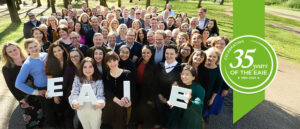British Columbia, Nova Scotia, Prince Edward Island and Ontario have described how they plan to distribute their PALs, which have been introduced as a way to control the federal cap on international students. The former three provinces have declared how many letters they have been given by central government.
The only other figures available are for New Brunswick. And the information for the province in Eastern Canada is only available thanks to local news organisation Brunswick News.
What we know
The deadline for provincial plan passed on March 31, with all provinces expected to have published its plans by the date.
British Columbia has allocated 53% of its 83,000 PALs to public post-secondary institutions, with the remaining 47% to private institutions.
Of Nova Scotia’s 12,900 study permit allocation, 10 universities and the Nova Scotia Community College will receive 11,565 applications. Some 710 will be shared between 12 private career colleges and 526 to nine language schools.
Prince Edward Island has said that the University of Prince Edward Island will receive 1,185 of its 2,000 PALs, with the remaining 710 going to Holland College and 105 to College de l’Ile, as Minister of Workforce, Advanced Learning and Population. Jenn Redmond told the provincial assembly on March 8.
Ontario has not stated publicly how many PALs it has been allocated but has said that 96% of them will to public institutions.
On April 4, the government of Saskatchewan announced it had been allocated 15,054 undergraduate or college-level study permit applications, a rise on the original 12,000 assigned by IRCC in February.
The province’s Advanced Education minister Gordon Wyant said Saskatchewan “appreciate IRCC increasing its allocation for Saskatchewan, as international students play a key role in maintaining economic growth and are a critical component to helping meet our labour market needs”.
It also said that the province is one of the first to establish an automated system to facilitate study permit applications for 2024 using academic tech platform MyCreds.
Saskatchewan has successfully processed over 1,200 PALs from 11 different post-secondary institutions to date.
New Brunswick is expecting to welcome 5,580 international students, with access to 9,300 PAL applications, as detailed by Brunswick News.
Other provinces have not been as forthcoming with information.
A spokesperson from the Department of Education in Newfoundland and Labrador told The PIE its government is ” currently in discussion with designated learning institutions regarding the allocation of provincial attestation letters”.
“Information will be released upon the conclusion of those discussions.”
In Manitoba, which has not shared details, minister of Advanced Education and Training Renée Cable said on March 13 that she was “working closely” with public-sector institutions.
In early March, the province had already launched a portal for institutions to apply for attestation letters, she said, adding that Manitoba was “way ahead”.
A provincial spokesperson from Manitoba confirmed to The PIE on April 2 that the province has “been working with the federal government to finalise its allocation to support the province’s labour market needs”.
“At present, Manitoba is issuing PALs and is prioritising public institutions,” they added.
Decisions made in Manitoba, along with those in Ontario and Nova Scotia, are those which have particularly disappointed Languages Canada’s members.
“Our members are not responsible for the unchecked growth of international student numbers yet they are being penalised,” CEO Gonzalo Peralta told The PIE on March 28, the day Ontario announced its plans.
“This is a sad day for our members across the country, English and French, public and private.”
British Columbia has been the “only seasonable and transparent province to date”, he added.
Conversion rates
There have also been questions about basing the cap on a 60% approval rate, with some institutions previous having significantly lower acceptance rates putting the blanket rule into doubt.
Nova Scotia’s Advanced Education minister Brian Wong said recently that the province’s conversion rate is 39%, which means that schools will have to improve to reach the 60% average if they want to mitigate hits to their finances.
The province has held back 99 application spaces to offer some flexibility in case any unexpected circumstances and new programs arise.
“We’ve taken a thoughtful approach to allocating the federal cap across the province, considering many factors like enrolment in our high-needs programs and managing growth in communities,” Wong said on March 28.
“That said, we will continue to advocate for a greater allocation from the federal government.
Similarly, in another province, University of Prince Edward Island has said that last year it made 3,200 offers to international students with 675 enrolled, representing a 21% conversion rate.
“What this new allocation means is that UPEI will have to develop a process to ensure that we distribute the 1,185 offers as prudently as possible so that a higher percentage of those students actually choose to come to UPEI, and we can maintain our international enrolment numbers,” interim president of UPEI Greg Keefe told CBC News in early March.
Collège Communautaire du Nouveau-Brunswick has a 36% acceptance rate, with CEO Pierre Zundel suggesting that it would need 15,000 letters rather than the 9,300 it has been allocated to maintain the number of international students.
Like in Saskatchewan, the policy could mean Alberta, Quebec and Newfoundland and Labrador gain more international students.
Federal government’s Toronto-centric policy
However, Regina-Wascana MP Michael Kram branded the cap policy “Toronto-centric”, suggesting it would be better to limit numbers on an institution-by-institution basis.
Importantly, Saskatchewan has signed an agreement with India in February, as well as with Khalifa University in December, as it seeks to internationalise its higher education system further.
The minister of Advanced Education of Alberta, Rajan Sawhney, said on March 27 that the province’s 2024 budget is “incredibly healthy and incredibly robust”.
“Certainly these postsecondary institutions have lots of supports at their disposal,” she said.
However, opposition politicians have questioned the 2% rise in tuition fees for domestic students, as well as provincial governments cutting postsecondary budgets by “about three-quarter billion dollars” as institutions turned to relying on increasing seats of international students.
Likewise, president and vice-chancellor of the University of Alberta, Bill Flanagan, has warned that the provincial operating grant has remained that same in the two previous years, at $436.6m.
“Without additional provincial funding to cover inflation and our rising costs, there will be significant ongoing pressure on our institutional budget,” he said in early March.
Similarly in Ontario, opposition politician and member of the New Democratic Party in the provincial assembly, Peggy Sattler has often brought up the province’s handling of higher education funding.
The province has been led by Doug Ford from the Progressive Conservative party since 2018.
Most recently on March 27, Sattler asked why the premier is “choosing not to increase post-secondary operating grants and deliberately allowing colleges to fail”, given the budget which she said would result in a $1.4-bn revenue loss for colleges in 2024/25 and an additional $1.7-bn loss in 2025/26.
Ontario’s minister of Finance, Peter Bethlenfalvy, said that the cap handed down to provinces as “a blunt instrument, in the middle of the night, without consultation”, Ontario has introduced a $1.3 bn stability fund.
Almost half of Ontario’s universities are reporting deficits, with government choosing to ignore advice from its own panel or an additional $2.5 billion in post-secondary base funding.
“[This government] is instead allowing university deficits to grow, programs to be eliminated, campuses to be closed and student supports to be cut,” Sattler said.
The opposition has previously said that Ontario’s $1.3bn funding boost in February is not enough to protect the higher education sector’s financial stability.
Bethlenfalvy responded that the Progressive Conservative had inherited “a terrible infrastructure deficit in this province”, with more money in the budget for student housing and tuition being made more affordable for local students.
On March 20, Sattler said “chronic underfunding” by both Liberal and Conservative governments had pushed Ontario’s post-secondary system “to the brink”.
Queen’s and Guelph already announced program cuts before Ontario announced that 96% of its PALs would go to public institutions.
With international students contributing $3.3 billion in tuition for Ontario’s colleges – more than the $1-bn domestic tuition and $1.9bn government operating grant – Sattler said the Ford government had actively promoted the growth of international students.
A spokesperson from IRCC told The PIE on April 2 that individual provincial and territorial allocations “will be announced in due course”.
They said that IRCC established allocations for each province and territory for 2024 “to respect provincial and territorial jurisdiction over education”.
“Allocations take into account the population share of each provinces and territory as well as previous study permit application volumes and approval rates,” they repeated.
Provinces and territories are still responsible for the distribution of PALs, they added.
New Brunswick, Alberta, Saskatchewan and Quebec did not respond to requests from The PIE about how many PALs they had been allocated and how the provinces have distributed them among education providers.
Ontario also did not respond to requests as to how many PALs they had been allotted under the federal rules.





